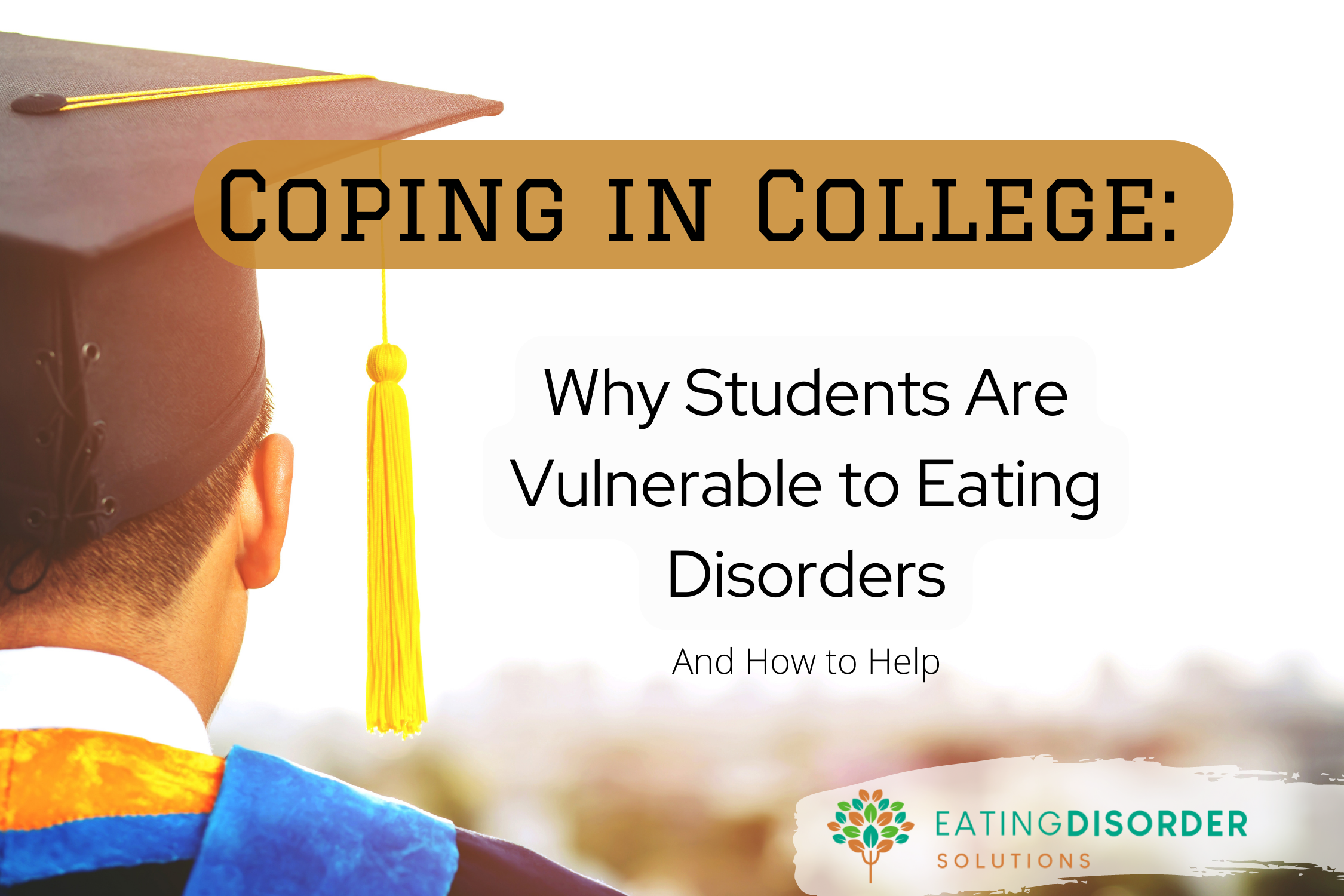An estimated 30 million Americans will confront an eating disorder during their lifetime, a significant portion of whom are college students. This critical period of transition to college life presents both excitement and numerous stressors, which can catalyze the development of eating disorders.
College introduces young adults to new environments fraught with challenges such as isolation, homesickness, academic pressures, roommate conflicts, peer pressure, and traumatic experiences. Moreover, it often marks the first time students are responsible for their own food choices, an experience that can be fraught with anxiety in the communal settings of residence halls, where social comparison and self-consciousness are rampant.
Triggers for Eating Disorders in College
Triggers for eating disorders encompass a broad range of stimuli that can evoke intense emotional reactions, leading individuals to seek distraction or escape. The unique college setting is filled with potential triggers:
- Change and Loss of Control: The newfound independence and lifestyle changes that come with college can overwhelm students, prompting some to seek control through strict regulation of food, exercise, and body weight.
- Academic Pressures: The stress of maintaining grades and managing a demanding schedule can lead some students to develop eating disorders as a means of exerting control in a seemingly uncontrollable environment.
- Social Integration: The anxiety of forming new friendships and the fear of social rejection or judgment can exacerbate feelings of inadequacy, potentially leading to disordered eating behaviors.
- Loneliness: The isolation felt by many college students, particularly those far from home, can trigger depression and low self-esteem, which are risk factors for developing eating disorders.
- Food Choices: The overwhelming array of food choices and the absence of familiar dietary guidance can be particularly challenging for students with eating disorders.
- Weight Loss Trends: The pervasive influence of social media and peer pressure to engage in dieting and weight-loss behaviors can contribute to unhealthy eating patterns and body dissatisfaction.
Common Eating Disorders in College Students
Between 20% to 67% of college students exhibit disordered eating behaviors, with anorexia nervosa, bulimia nervosa, and binge eating disorder being the most diagnosed on campuses.
- Anorexia Nervosa: Characterized by extremely restricted eating and a distorted body image, leading to severe thinness and an intense fear of gaining weight.
- Bulimia Nervosa: Marked by episodes of binge eating followed by purging, often without significant weight loss, resulting in gastrointestinal problems, sore throats, and tooth enamel erosion.
- Binge Eating Disorder: Defined by recurrent binge eating without compensatory behaviors, causing feelings of shame, distress, and lack of control over eating.
Who is Affected and Warning Signs
Eating disorders affect individuals across all demographics, though they are predominantly diagnosed in young adults.
- Gender Prevalence: While traditionally more common among females, with 10% to 20% of female college students affected, the prevalence among male college students is notable, affecting 4% to 10%.
- LGBTQ+ Community: A national survey found a disproportionately high rate of eating disorders among LGBTQ+ youth, with 54% having been diagnosed with an eating disorder and an additional 21% suspecting they might have one. The underdiagnosis in this group is significant, often due to misinterpretation of symptoms by healthcare providers.
- Athletes: College athletes, especially those in weight-class and aesthetic sports like wrestling, dance, and gymnastics, face heightened risks, with up to 84% engaging in unhealthy weight-control behaviors. The pressure to perform and maintain specific body standards can drive disordered eating across all levels of sport.
Symptoms of Eating Disorders in College Students
Recognizing the symptoms of eating disorders is crucial for early intervention. Students might exhibit behaviors such as:
- Skipping meals or eliminating entire food groups, leading to significant weight loss.
- Developing an obsession with food, body image, and exercise routines.
- Avoiding eating in public settings like dining halls.
- Exercising excessively, beyond one hour daily (excluding sports training), or feeling guilty for not exercising.
- Binge eating large amounts of food in short periods and feeling out of control during these episodes.
- Engaging in purging behaviors after eating.
- Limiting food intake before consuming alcohol to minimize its effect on weight.
It’s important to remember that these symptoms can be more difficult to notice in students living away from home, potentially allowing eating disorders to progress unchecked. Parents and friends are encouraged to maintain open communication and to be observant of any concerning signs, especially during visits home.
Trigger Management Tips
Dealing with triggers effectively can reduce the risk of succumbing to disordered eating behaviors. Here are several strategies to help students manage their triggers:
Help Them Learn to Identify Their Feelings
Encouraging students to recognize and name their emotions can help them understand the root causes of their distress and manage their reactions more effectively. Simple self-reflection exercises can be a starting point for developing healthier coping mechanisms, such as asking yourself:
- “Okay, I’m feeling this emotion right now.”
- “What else is going on with me?”
- “What do I need right now?”
- “How can I best take care of myself right now?”
- “How do I address this?”
Share a Self-Help Strategy: The ACCEPTS Approach
The ACCEPTS method offers a structured way for students to navigate difficult emotions and stressors:
- A – Activities: Engaging in distracting or pleasurable activities. Try coloring, hanging out with someone they trust, taking a walk around campus, watching a movie, doing dishes, or reading something they’re interested in.
- C – Contributing: Doing something helpful for others. Whether they’re volunteering at a shelter, helping a friend, or opening a door, making a difference around them can help their mental state.
- C – Comparisons: Reflecting on past challenges and recognizing personal growth. Allow them to notice how much better they are now compared with other stressful or triggering situations they’ve had to deal with before.
- E – Emotions: Trying to evoke different, more positive emotions. Have them put their feelings into words or art by writing in a journal, painting, drawing, coloring, or listening to inspirational music.
- P – Pushing away: Temporarily setting aside distressing thoughts. They can revisit the distressing thoughts and emotions later when they are calmer or around someone they trust.
- T – Thoughts: Directing attention away from triggers by counting something, writing helpful affirmations down, thinking about something that makes them happy, or reading a self-help article or book.
- S – Sensations: Seeking out comforting physical sensations. Enjoying a warm bath, placing their face in ice water, trying aromatherapy, getting a massage, going outside and smelling the fresh air, and feeling the grass between their toes are all helpful options.
Offer Options for Eating a Balanced Diet
Guiding students towards making balanced food choices can help alleviate some of the stress associated with eating. Encouraging small, manageable changes towards a diet that includes a variety of nutrients can be beneficial.
Aid in Reframing Negative Thoughts
Helping students challenge and reframe negative thought patterns is essential. Encourage them to counteract negative self-talk with more positive and compassionate statements about themselves and their capabilities.
- Instead of, “I am not worth anything.” Try saying, “I am valuable, and I have plenty to give this world.”
- Instead of, “I want to give up.” Try saying, “I need to try a new strategy.”
- Instead of, “This is as good as I’m going to get.” Try saying, “I can always get better if I keep at it.”
- Instead of, “I’m fat and ugly, and no one will love me.” Try saying, “I am learning to love and accept myself just as I am.”
- Instead of, “I’m never going to be good enough.” Try, “I’m finding this hard right now, so I need to be especially gentle with myself today.”
- Instead of, “I’m damaged and broken.” Try saying, “I’m healing and rediscovering myself.”
Become A Reliable Support Network For Them
Being available and supportive can make a significant difference for students struggling with eating disorders. Offer a listening ear, engage in activities that don’t focus on food, and be there to support them in finding professional help if needed.
Offer Compassion and Understanding
Promoting self-compassion and understanding among students can empower them to take breaks from academic pressures and focus on self-care without self-judgment.
Early Intervention is Essential
Recognizing the signs of eating disorders and seeking help early can significantly improve the chances of recovery. If you or someone you know is struggling with an eating disorder in college, reaching out for professional support is a critical step. Eating Disorder Solutions is here to provide guidance, support, and treatment options tailored to the unique challenges faced by college students.For more information or to talk to someone about eating disorders, please call us at 877-370-4186 or contact us online. We’re here to help navigate these challenges and support recovery at every step.
Sources:
- https://www.ncbi.nlm.nih.gov/pmc/articles/PMC3721327/
- https://childmind.org/article/eating-disorders-and-college/
- The Trevor Project, National Eating Disorders Association, & Reasons Eating Disorder Center (2018). Eating Disorders Among LGBTQ Youth: A 2018 National Assessment.
- https://www.healthline.com/health-news/lgbtq-youth-develop-eating-disorders-at-higher-rates-than-their-peers
- https://thesportjournal.org/article/disordered-eating-and-compulsive-exercise-in-collegiate-athletes-applications-for-sport-and-research/
- https://www.bu.edu/articles/2022/heightened-risk-of-eating-disorders-for-transgender-gender-diverse-college-students/
- https://health.usnews.com/conditions/eating-disorder/articles/eating-disorder-statistics
- Clifford, T., & Blyth, C. (2018). A pilot study comparing the prevalence of orthorexia nervosa in regular students and those in university sports teams. Eating and Weight Disorders – Studies on Anorexia, Bulimia and Obesity, 24(3), 473-480.



